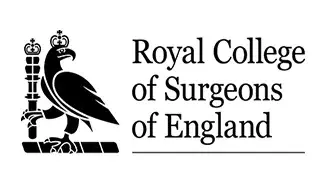What is a tummy tuck?
Sometimes referred to as an abdominoplasty, a tummy tuck is a type of cosmetic surgery used to adjust the shape of the abdomen or tummy. It may involve:
- Liposuction to remove excess fat
- Scar or stretch mark removal
- Tightening of the abdominal muscles
- Removal of loose skin
A tummy tuck should never be seen as an alternative to losing weight. They are generally only recommended for those who already have a healthy BMI, but have loose skin. This could be due to pregnancy or if a person has lost a lot of weight. This loose skin usually can’t be shifted with exercise, as the skin has lost some of its elasticity and cannot shrink back.
How long does a tummy tuck take?
A tummy tuck can take between two and five hours, depending on which type you get. You may choose either a full or a mini tummy tuck, and your surgeon should be able to advise you which is best to achieve your goals. Both of these procedures involve general anaesthetic, which may have a disorienting effect.
Usually, people who have a tummy tuck will stay in hospital for at least one night. Your surgeon will be able to prepare you for what to expect in your specific situation.
How long is recovery after a tummy tuck?
After having a tummy tuck, patients typically need four to six weeks of time off from exercise and work. This will depend on several factors, so it’s best to discuss this with your surgeon before you have the procedure. For example, you may be able to work from home before this time if your job allows it. It’s a good idea to speak with your boss or manager to find out how much flexibility you have in case recovery takes longer than expected.
It can take up to six weeks for the full effects of your abdominoplasty to be seen. During this time, you will be asked to wear a tummy control garment that will help you heal and may reduce swelling. Taking it easy will help to avoid any issues in your recovery. After the six weeks have passed and you’ve had a follow up appointment with your surgeon, you will likely be able to take the compression garment off and return to your normal activities. Always get your surgeon’s approval before doing so.
Can you drive after a tummy tuck?
For the first few weeks after your procedure, you shouldn’t drive. This is because it can put a strain on your stitches and you may not be able to react as quickly as you would in normal circumstances. You’ll need to get someone to pick you up from the hospital after you’ve been discharged.
How long this no-driving period lasts varies from case to case, so it’s best to get your surgeon’s advice. Your insurance company will also need to know you’ve recently had surgery, and they may also have an input on when you can return to driving as normal.
Can you fly after a tummy tuck?
Flying after you have surgery can be painful, and may increase your risk of problems such as deep vein thrombosis (DVT). As a general rule, it’s best to wait at least 10 days after your surgery before you fly, as this gives your body time to heal and recover. However, you’ll need to speak with your surgeon, your airline of choice and your travel insurer, as they can advise you on the specifics of your situation. Some insurers won’t cover you if you fly soon after a surgery due to the increased risk.
If you fly after surgery, you are at a greater risk of developing DVT, particularly if the surgery was on your hips, thighs or legs. There are other things that can increase your risk, such as a family history of blood clots, but even with these factors, the risk is low. You can also take steps to lower the risk of developing DVT by taking regular walks around the plane during the flight, drinking plenty of water and wearing compression stockings.
Speaking to your surgeon about the risk of DVT and other problems is the best way to inform the decision of whether or not to fly. Factors that may influence the decision include:
Usually, you can start swimming again once your stitches have dissolved or been removed and the incisions have fully healed. If you’re still experiencing pain, it’s a good idea to avoid swimming as it may be an indication that something is wrong. As a rule, you should always get advice from your surgeon or GP before you swim after a surgery.
If your stitches need to be removed, this can typically be done from seven to 10 days after the surgery. The dissolving kind will take longer, but you won’t need an appointment to get them out. If you have any conditions that delay healing or increase your risk of infection, you should avoid swimming for longer and seek medical advice before returning to the water.
It’s also best to avoid having baths until your wounds have fully healed, as submerging the affected area in water could increase the risk of infection or damage. Generally speaking, you can shower from 48 hours after having stitches. Your surgeon will advise you if any of your dressings need to be kept dry. After you get out of the water, whether it’s a bath, a shower or a swimming pool, be gentle with your abdomen. Pat it dry with a towel rather than rubbing it, and try not to leave it damp for too long.
- How your recovery is going
- How long it’s been since the surgery
- How long the flight will take
- What you plan to do – will you be able to rest as per your recovery requirements?
- Whether you’re travelling alone or with companions
How soon after a tummy tuck can I swim?
Usually, you can start swimming again once your stitches have dissolved or been removed and the incisions have fully healed. If you’re still experiencing pain, it’s a good idea to avoid swimming as it may be an indication that something is wrong. As a rule, you should always get advice from your surgeon or GP before you swim after a surgery.
If your stitches need to be removed, this can typically be done from seven to 10 days after the surgery. The dissolving kind will take longer, but you won’t need an appointment to get them out. If you have any conditions that delay healing or increase your risk of infection, you should avoid swimming for longer and seek medical advice before returning to the water.
It’s also best to avoid having baths until your wounds have fully healed, as submerging the affected area in water could increase the risk of infection or damage. Generally speaking, you can shower from 48 hours after having stitches. Your surgeon will advise you if any of your dressings need to be kept dry. After you get out of the water, whether it’s a bath, a shower or a swimming pool, be gentle with your abdomen. Pat it dry with a towel rather than rubbing it, and try not to leave it damp for too long.
Tummy Tuck Before and After Gallery
Read Our Patient Reviews
Explore our reviews made by real patients
Meet Our Expert Surgeons
Get to know our highly experienced surgeons
Consultation Locations
We offer Consultations from a number of locations around the UK
Prices and finance
We have partnered with Chrysalis Finance, allowing patients to apply for cosmetic surgery finance for all our procedures
Consultation Locations
Manchester Hospital
Manchester Private Hospital New Court, Regents Place, Windsor
Street Salford, Greater Manchester, M5 4HB.




























